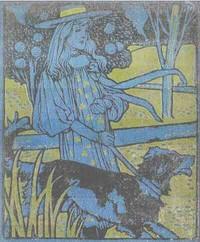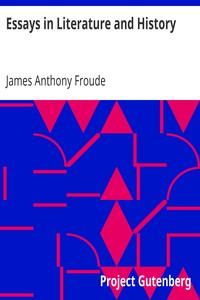|
|
Read this ebook for free! No credit card needed, absolutely nothing to pay.Words: 33792 in 11 pages
This is an ebook sharing website. You can read the uploaded ebooks for free here. No credit cards needed, nothing to pay. If you want to own a digital copy of the ebook, or want to read offline with your favorite ebook-reader, then you can choose to buy and download the ebook.

: The Wild Tribes of Davao District Mindanao The R. F. Cummings Philippine Expedition by Cole Fay Cooper - Ethnology Philippines Mindanao Island Anthropology@FreeBooksTue 06 Jun, 2023 n the top of the first specimen. This last was made in my presence, and with the expressed intention of duplicating the Moro box. However, in this case, as in all others, the Bagobo caster did not attempt to exactly reproduce the work of another, but simply borrowed a broad idea, and thus he often creates new forms. See LING ROTH, Oriental Silver Work. Not once did the writer receive a name for any pattern or design shown in metal work. A careful study of the method of work, of the articles produced, and of the folk-lore and religious observances connected with the work in brass and copper brings one to the conclusion that this class of work is of comparatively recent introduction and that the instructors in the art were the Samal Moro. Mention has already been made of the designs incised on combs and other objects which are afterwards filled with lime. Just here it is interesting to note that, so far as is known, the southern end of Mindanao and adjacent small islands, are the only parts of the Philippines in which this decoration, so typical of Melanesia, is to be found. Realistic carvings were seen used in only two capacities. The first in certain ceremonies, where extremely crude wooden figures were offered to the spirits in exchange for the sick person , and the second, the wooden decoys used in hunting doves . Summing up our present information we can say: first, that the Bagobo makes use of certain realistic designs which in some cases have become conventionalized but still retain their former significance; second, that the greater part of decoration in beads, shell disks, embroidery or applique, as well as the incised designs in lime boxes and the like, have no meaning to the people of the present day, and are added only to make the objects more beautiful in the eyes of the owners. In this work there are no set patterns and each artist gives full reign to the fancy in producing these figures. Third, that the ideas for the patterns inlaid, incised, and cast in brass or copper, are furnished by the examples of this work coming from the Malays to the south, but that even in these the artist has taken great liberties in the execution of the design. Fourth, that one type of decoration, i. e., the incised figures filled with lime, suggests the possible influence of Melanesia on the artistic ideas of this people. MYTHOLOGY. During my stay with this tribe I heard parts of many folk-tales, some chanted, others told with gravity, and still others which caused the greatest levity. My limited knowledge of the dialect and pressure of other work caused me to delay the recording of these tales until I should begin a systematic study of the language. Owing to unforeseen circumstances, that time never came, and it is now possible to give only the slightest idea of a very rich body of tales. Since this was written MISS BENEDICT has published an excellent collection of Bagobo Myths The two following tales are typical of those commonly heard in a Bagobo gathering. The first was told by Urbano Eli, a Bagobo of Malilla. "After the people were created a man named LumabEt was born. He could talk when he was one day old and the people said he was sent by Manama. He lived ninety seasons and when still a young man he had a hunting dog which he took to hunt on the mountain. The dog started up a white deer and LumabEt and his companions followed until they had gone about the world nine times when they finally caught it. At the time they caught the deer LumabEt's hair was grey and he was an old man. All the time he was gone he had only one banana and one camote with him for food. When night came he planted the skin of the banana and in the morning he had ripe bananas to eat, and the camotes came the same way. When he had caught the deer LumabEt called the people to see him and he told them to kill his father. They obeyed him and then LumabEt took off his headband and waved it in the air over the dead man, and he at once was alive again. He did this eight times and at the eighth time his father was small like a little boy, for every time the people cut him in two the knife took off a little flesh. So all the people thought LumabEt was like a god. "He went to the place Binaton, across the ocean, the place where the earth and sky meet. When he got there he saw that the sky kept going up and down the same as a man opening and closing his jaws. LumabEt said to the sky 'You must go up,' but the sky replied 'No.' At last LumabEt promised the sky that if he let the others go he might catch the last one who tried to pass; so the sky opened and the people went through; but when near to the last the sky shut down and caught the bolo of next to the last man. The last one he caught and ate. Free books android app tbrJar TBR JAR Read Free books online gutenberg More posts by @FreeBooks
: The Universe — or Nothing by Moldeven Meyer - Science fiction Science Fiction@FreeBooksTue 06 Jun, 2023

: Woodside or Look Listen and Learn. by Hadley Caroline - Christian life Juvenile fiction; Animals Juvenile fiction; Country life Juvenile fiction; Natural history Juvenile fiction; Cousins Juvenile fiction; Grandparents Juvenile fiction; Storytelling Juveni@FreeBooksTue 06 Jun, 2023
|
Terms of Use Stock Market News! © gutenberg.org.in2025 All Rights reserved.






